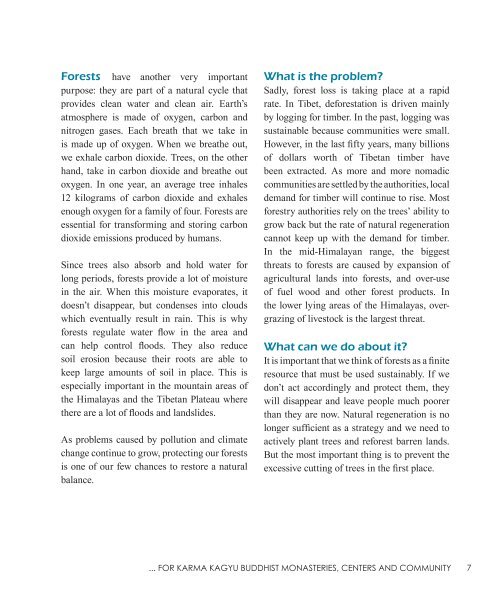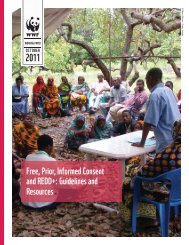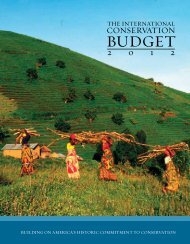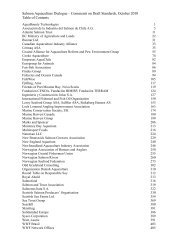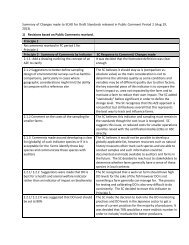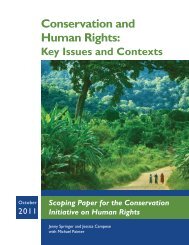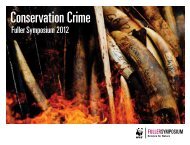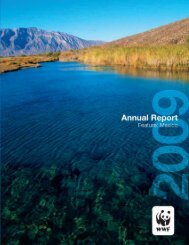ENVIRONMENTAL GUIDELINES - World Wildlife Fund
ENVIRONMENTAL GUIDELINES - World Wildlife Fund
ENVIRONMENTAL GUIDELINES - World Wildlife Fund
You also want an ePaper? Increase the reach of your titles
YUMPU automatically turns print PDFs into web optimized ePapers that Google loves.
Forests have another very important<br />
purpose: they are part of a natural cycle that<br />
provides clean water and clean air. Earth’s<br />
atmosphere is made of oxygen, carbon and<br />
nitrogen gases. Each breath that we take in<br />
is made up of oxygen. When we breathe out,<br />
we exhale carbon dioxide. Trees, on the other<br />
hand, take in carbon dioxide and breathe out<br />
oxygen. In one year, an average tree inhales<br />
12 kilograms of carbon dioxide and exhales<br />
enough oxygen for a family of four. Forests are<br />
essential for transforming and storing carbon<br />
dioxide emissions produced by humans.<br />
Since trees also absorb and hold water for<br />
long periods, forests provide a lot of moisture<br />
in the air. When this moisture evaporates, it<br />
doesn’t disappear, but condenses into clouds<br />
which eventually result in rain. This is why<br />
forests regulate water flow in the area and<br />
can help control floods. They also reduce<br />
soil erosion because their roots are able to<br />
keep large amounts of soil in place. This is<br />
especially important in the mountain areas of<br />
the Himalayas and the Tibetan Plateau where<br />
there are a lot of floods and landslides.<br />
As problems caused by pollution and climate<br />
change continue to grow, protecting our forests<br />
is one of our few chances to restore a natural<br />
balance.<br />
What is the problem?<br />
Sadly, forest loss is taking place at a rapid<br />
rate. In Tibet, deforestation is driven mainly<br />
by logging for timber. In the past, logging was<br />
sustainable because communities were small.<br />
However, in the last fifty years, many billions<br />
of dollars worth of Tibetan timber have<br />
been extracted. As more and more nomadic<br />
communities are settled by the authorities, local<br />
demand for timber will continue to rise. Most<br />
forestry authorities rely on the trees’ ability to<br />
grow back but the rate of natural regeneration<br />
cannot keep up with the demand for timber.<br />
In the mid-Himalayan range, the biggest<br />
threats to forests are caused by expansion of<br />
agricultural lands into forests, and over-use<br />
of fuel wood and other forest products. In<br />
the lower lying areas of the Himalayas, overgrazing<br />
of livestock is the largest threat.<br />
What can we do about it?<br />
It is important that we think of forests as a finite<br />
resource that must be used sustainably. If we<br />
don’t act accordingly and protect them, they<br />
will disappear and leave people much poorer<br />
than they are now. Natural regeneration is no<br />
longer sufficient as a strategy and we need to<br />
actively plant trees and reforest barren lands.<br />
But the most important thing is to prevent the<br />
excessive cutting of trees in the first place.<br />
... FOR KARMA KAGYU BUDDHIST MONASTERIES, CENTERS AND COMMUNITY<br />
7


